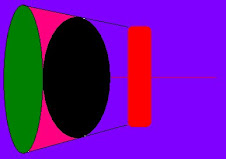Monday, June 13, 2011
Fermi energy calculation-an easy method.
Acoustic grating method of ultrasonic study
Here ultrasonic waves are produced by inverse piezoelectric effect by using a quartz crystal. This ultrasonic waves are allowed to travel through a water column and then is allowed to reflect back by a mirror. This forms a grating because in the liquid column a stationary wave pattern is formed with nodes and antinodes. Nodal points blocks light or they are opaque to light. Antinodal points transmit the light. If you carry out diffraction study using a spectrometer and a source of monochromatic light, u can observe diffraction pattern. You find out the angle of diffraction, substitute it in grating equation to find out wavelength of ultrasonic waves. From wavelength, we can easily find out velocity if frequency is known.
Friday, March 6, 2009
EDSER-BUTLER FRINGES
DEFLECTION MAGNETOMETER
POTENTIOMETER- e.m.f of a Thermocouple
CAREY FOSTER'S BRIDGE
MIRROR GALVANOMETER
Sunday, January 4, 2009
DETERMINATION OF PLANCK'S CONSTANT USING LIGHT EMITTING DIODES
APPARATUS:Regulated DC power supply, Light emitting diodes, Digital voltmeter and Digital microammeter.
PRINCIPLE: Planck’s constant ‘h’ is given by,
h = eVl/c = eV/n where ‘e’ is the electron charge, ‘V’ the turn on voltage corresponding to a LED which emits light of wavelength ‘l’, frequency ‘n’and ‘c’ the velocity of light. If we draw a graph between turn on voltage ‘V’ and frequency ‘n’, from the slope of the graph, we can determine the Planck’s constant
PROCEDURE: Connections are made as shown in figure. Turn on voltages of different light emitting diodes are taken and plotted against corresponding frequencies. Slope of the graph will give Planck’s constant.
RESULT:
Planck’s constant =

